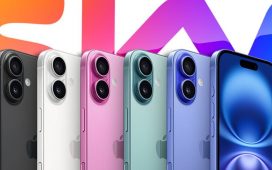Are you ready to bring more awareness to your brand? Consider becoming a sponsor for The AI Impact Tour. Learn more about the opportunities here.
Memes have been around since the earliest days of the consumer world wide web — those of us with birth years beginning with “19” will likely recall the dancing baby, dancing hamsters, and “You’re the man now, dog,” among others.
Yet the advent of consumer facing generative AI services — spearheaded by the release of OpenAI’s ChatGPT almost one year ago — has birthed a whole new category of memes, those made using gen AI art tools. I’ve observed four big ones cropping up over the last few months, including some in just the past week.
Why should we care? Well, aside from the rapid uptake of generative AI technology by consumers for purposes of humor and entertainment — which will likely only further familiarize them with gen AI tools and apps and their utility, and lead to an even stronger push by said individuals to have access to the same or similar tools in their workplaces, a kind of BYOAI, or “bring your own AI,” push, similar to the BYOD (bring your own device) trend that swept enterprises and placed a strain on many an IT department back in the late 2000s and early 2010s as the iPhone cemented the touchscreen smartphone as the must-have gadget of the moment — there’s another good reason.
Recall also how various organizations and enterprises have in recent years sought to leverage memes to promote their own brands and products/services online. Some of these efforts have resulted in applause, while others were mired in controversy.
VB Event
The AI Impact Tour
Connect with the enterprise AI community at VentureBeat’s AI Impact Tour coming to a city near you!
Still, clearly generative AI memes are here to stay and are poised to only increase in raw numbers, likely dwarfing memes created by other memes in the near future. For brands looking to stay relevant and capitalize on these trends, here are some of the latest and their promises and pitfalls.
1. ‘Make it more’ with ChatGPT and DALL-E 3
The first gen AI meme example that inspired me to write this very article is also likely among the newest. I came across it on Instagram, where someone had reposted a series of screenshots originally posted to Reddit by user Peter Attia, a performance marketer at enterprise data management company Alation.
The screenshots showed Attia’s conversation with ChatGPT, using its built-in DALL-E 3 image generation capabilities to make an image of “an adorable bunny.” ChatGPT generated the image as described, but Attia then told the AI chatbot to “make it happier.” He repeated this process several times, each time with ChatGPT insisting it was becoming more difficult to make a happier bunny, before it finally resulted in an abstract, fractal-like image that “embodies the ultimate form of happiness, transcending all known beings and concepts.”

The final image was a far cry from the initial bunny ChatGPT generated using DALL-E 3. Many users found the progression both hilarious and thought-provoking, and it is indeed difficult not to get a little philosophical when looking at an AI model interpreting a human emotion such as “happiness” and seeking to maximize it in a visual format, reflecting the limitations of a machine imagination based on mountains of human generated training data.
Yet the internet, as it is wont to do, did not stop there. The “make it more trend” has since spread to other users and concepts, with people seeking to have ChatGPT generate maximalist versions of “spicier,” “more smug,” and “sillier,” among others. This superlative trend shows no signs of slowing down.
2. Turning adult/NSFW/controversial phenomena into a Disney/Pixar movie
This is one of the older AI meme formats at this point, and has been so well-worn that Microsoft has apparently put in a stop to it on its Bing Image Creator with is also powered by OpenAI’s DALL-E 3.
In essence, the meme format essentially sees web users creating movie posters and scenes in the style of Disney Pixar animated movies, with cutesy, simplistic, rounded corner and soft-edge, soft-lit people, characters and scenes. Except instead of the usual child-geared, family friendly content, these Pixarified AI memes depict fully adult and frequently NSFW/inappropriate or controversial figures and subjects, such as deceased convicted sex offender Jeffrey Epstein.
…or serial killer Jeffrey Dahmer.
The humor in this meme comes from the juxtaposition of the two discordant subjects — childlike Disney/Pixar animation styling paired with fully adult and often unsettling or upsetting news stories.
3. Rendering iconic children’s cartoon/gaming characters in urban, quasi racist style
This is the meme that made me want to write this article. If you’ve spent any time on Instagram in the past few weeks (and lord knows I’ve spent too much) and follow more than a few dozen accounts, you’ve probably come across memes depicting iconic characters such as Peter Griffin from Family Guy or Mario from the Super Mario Bros. video game and movie franchise depicted wearing baggy clothes, chains, and diamond or gold-covered grillz on their teeth, accompanied by captions that are puns on their names or elements of their franchises. I’ve bookmarked at least 50 of these since first noticing them.
These renderings vary in quality of their animation style and pun cleverness, but all reference the cultural stylings of urban African Americans, playing up some of the cosmetic and aesthetic trappings that originated in said communities and sometimes affecting African American vernacular English (AAVE) in their captions.
Clearly many are meant in good fun, but some do make me — a white Ecuadorian American — a little uncomfortable, reminding me a bit of the historic racist “Sambo” dolls I’ve seen from the slavery and Reconstruction-era United States, but I’ll leave it to the race scholars to debate the merits of these memes. Brands would probably do well to steer clear of this meme trend.
4. Adding motion to static memes
Thanks to the advent of generative AI video tools such as Runway’s Gen-2, it’s now easy and fast to add motion to static images. Naturally, creators around the web have used this to animate static memes from the years before gen AI, including such popular favorites as the “salad cat” and “distracted boyfriend.” The results are as eerie in the uncanniness of their motion as they are entertaining. This is probably one of the more “brand safe” trends I’ve come across in the AI meme space.
Final thoughts (for now)
As Pennsylvania University Wharton School of Business professor and AI influencer Ethan Mollick noted yesterday, Google Search itself is beginning to surface AI-generated imagery among its results.
We’re headed toward a future where the overwhelmingly majority of content on the web is AI generated — and likely, the vast majority of content overall.
What this means for humanity and society remains to be seen, but it’s happening, and with most people unable to reliably distinguish between AI-generated images and photographs of real people — there seems to be no stopping it.
I’ve written previously about research showing that AI models suffer “model collapse” when their training data includes AI-generated content, and the researchers behind that paper noted that much like humanity has choked the world with plastic, so too are we headed toward a future of choking the internet with low-quality AI generated digital content.
But I would hasten to point out that it doesn’t have to be all bad: there are fascinating artworks that have already been made with generative AI, and many more to come. As with all technologies, it is wholly dependent on people and the choices they make when using it — for good or for ill, though when it comes to art and content, those are also of course, largely subjective, varying based on the individual. To put it another way: there’s no accounting for taste.
VentureBeat’s mission is to be a digital town square for technical decision-makers to gain knowledge about transformative enterprise technology and transact. Discover our Briefings.











